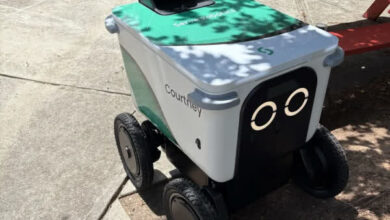What Is An Evaporation Engine & How Does It Work?


AlexReut/Shutterstock
By C. Gordon/
It’s not likely to replace the combustion engine anytime soon. At first sight, it looks like an experiment at a high school science fair. But the so-called evaporation engine seems to have more technological potential that the little plastic box implies. Created a few years ago by bioengineers at Columbia University, the machine is able to harvest energy from the natural process of water evaporation. It’s a technology that is still being scaled and has years to go, which is why the initial study was only able to power a very tiny car with a little puddle of water underneath. Both, however, could grow.
The technology relies on bacterial spores that expand and contract based on absorbing moisture from a puddle of water below. In the initial experiment, strips of the spores expanded after absorbing the moisture, and the movement triggered a cord linked to a small electromagnetic generator, ultimately producing energy. Simultaneously, that movement opened a set of shutters at the top of the engine to expel the moisture and reset the process.
How this helped a tiny car move across a table, and other applications
A wheel with the spores attached around contained half a wet environment and half a dry environment, and because the spores expanded when absorbing moisture, it created a mass imbalance which continuously turned it. They then attached that big spinning wheel to a small car frame with four tiny wheels, and it began to push it across a table.
As study coauthor Ozgur Sahin explains, “So far we’ve been able to capture energy as water comes down from the clouds. But we would like to capture energy from evaporation … We haven’t been able to capture energy from that effectively, until now.” The other applications of such technology are seemingly endless, including the possibility of machines operating on their own over bodies of water, as well as in remote areas where there isn’t access to regular electricity. The bioengineers imagine specific applications as well like prosthetics, batteries, generators, and even sportswear that will dynamically respond to your sweat.
But as the researchers note, the bigger picture is that it could slow down and harness the evaporation process, saving water and producing power at the same time.


